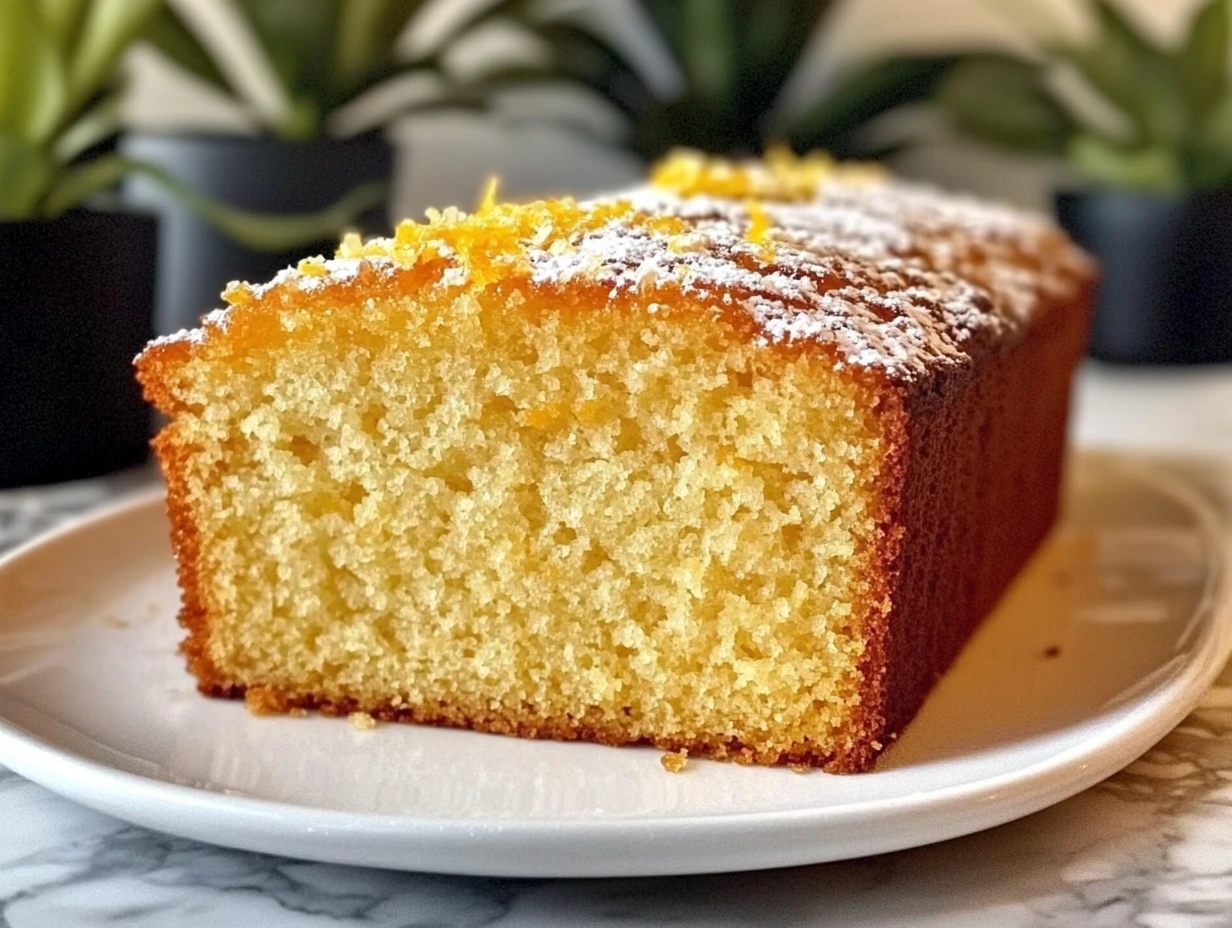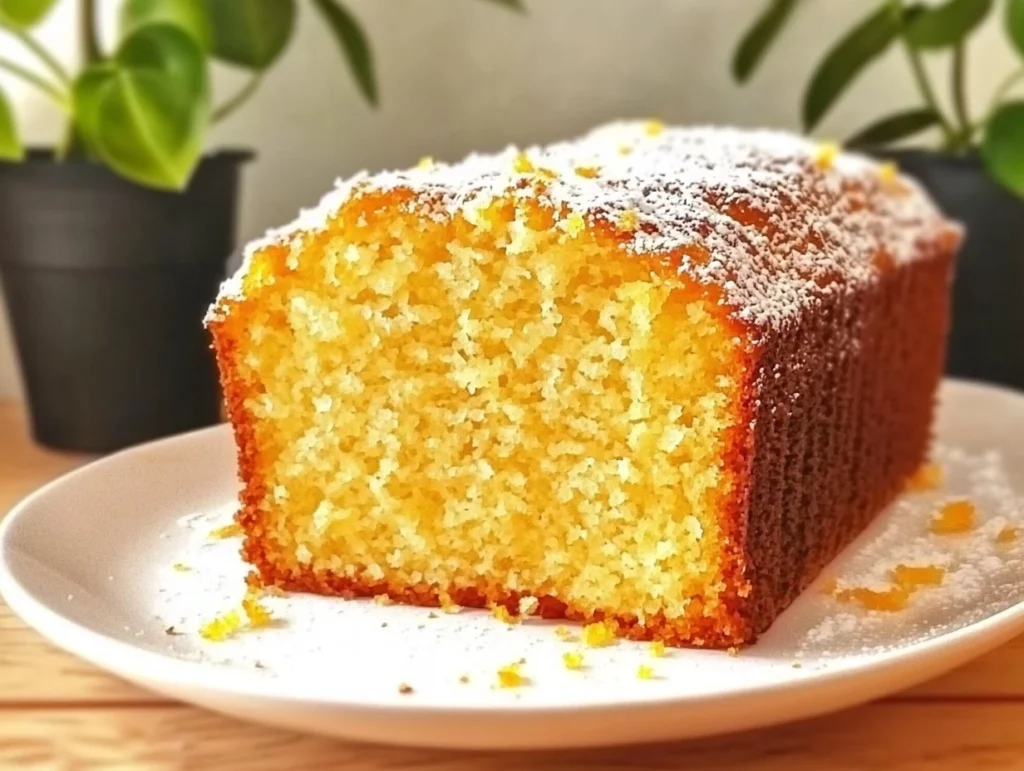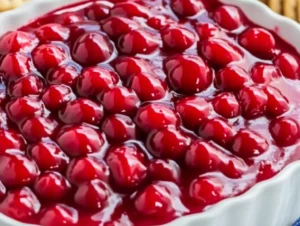There’s just something about the smell of citrus baking in the oven that instantly makes everything feel sunnier—even on a cloudy day. That’s exactly what this Orange Cake brings to the table. It’s light, zesty, and perfectly moist, thanks to fresh orange juice and zest. Whether you’re making it for a springtime brunch, a casual afternoon treat, or just to satisfy that sweet citrus craving, this cake checks all the boxes: simple to make, full of flavor, and absolutely gorgeous once glazed.
I first stumbled on this recipe while trying to use up a bowl of fresh oranges that were quickly ripening on the counter. I didn’t want anything too heavy or complicated—just a straightforward cake that lets the bright, clean flavor of orange shine. And honestly? This one has become a go-to for me. It’s almost too easy, and the results never disappoint.
This cake is soft, fragrant, and carries a lovely golden color that makes it as pretty as it is delicious. And if you decide to add the optional glaze (which I highly recommend if you like a little sweet tang), it takes things to the next level. It’s the kind of cake that makes people think you spent way more time on it than you actually did—my favorite kind of baking magic.
Ingredients You’ll Need
For the Cake:
-
1 cup all-purpose flour
-
1 cup granulated sugar
-
½ cup vegetable oil (or melted butter)
-
3 large eggs, at room temperature
-
½ cup fresh orange juice (about 2 oranges)
-
Zest of 1 large orange
-
1 teaspoon baking powder
-
½ teaspoon baking soda
-
Pinch of salt
Optional Orange Glaze:
-
1 cup powdered sugar
-
2 to 3 tablespoons fresh orange juice (adjust for consistency)
-
Zest of 1 orange, for garnish
STEP 1: PREP YOUR PAN AND PREHEAT
Before you dive into mixing, go ahead and get your oven heating to 350°F (175°C). This gives it enough time to reach the right temperature while you prep the batter.
Grab an 8×8-inch cake pan—either round or square works. Grease it lightly with oil or butter, then line it with parchment paper. This might seem like an extra step, but it makes it so much easier to lift the cake out once it’s done. No stuck edges or broken slices!

STEP 2: MIX THE WET INGREDIENTS
In a large bowl, whisk together the granulated sugar and eggs. You’re aiming for a smooth, slightly frothy texture—this helps give the cake a little extra lift.
Next, add in the vegetable oil, fresh orange juice, and zest. Whisk everything together until it’s fully blended and bright yellow in color. That fresh zest really starts to make its presence known at this stage—don’t skip it! It’s where so much of that pure orange flavor comes from.
STEP 3: ADD THE DRY INGREDIENTS
Now it’s time to sift in your dry ingredients: flour, baking powder, baking soda, and a pinch of salt. Sifting helps keep the batter light and lump-free.
Use a spatula or large spoon to gently fold the dry ingredients into the wet mixture. The key here is not to overmix. You want to stir just until everything is combined—overmixing can make the cake dense instead of fluffy.

STEP 4: BAKE TO GOLDEN PERFECTION
Pour the batter into your prepared cake pan and use the back of a spoon or spatula to smooth the top. Bake it for 25 to 30 minutes, depending on your oven. You’ll know it’s done when a toothpick inserted into the center comes out clean or with just a few moist crumbs clinging to it.
When it’s ready, let the cake cool in the pan for 10 minutes. Then, carefully transfer it to a wire rack to cool completely before glazing (if you’re going that route).
Bright & Moist Orange Cake Recipe with Fresh Citrus Flavor
Now that your cake is baked and cooling on a wire rack, it’s time to move on to what might just be the best part—the orange glaze. If you’ve ever had a citrus glaze that’s just the right amount of sweet and tangy, you know how it can completely transform a simple cake into something extra special. That’s exactly what we’re doing here.
But don’t worry—if you prefer a more minimalist approach, this cake is delicious all on its own. The crumb is tender, the orange flavor is bright, and it’s honestly hard to stop at one slice. Still, the glaze adds a beautiful sheen and even more orange punch. Let’s get into the next steps.
STEP 5: MAKE THE OPTIONAL ORANGE GLAZE
If you’re planning to glaze the cake (and I highly recommend you do), make sure the cake is completely cooled before you start. If it’s even slightly warm, the glaze will melt and soak into the cake instead of sitting nicely on top.
In a small bowl, whisk together 1 cup of powdered sugar with 2 to 3 tablespoons of fresh orange juice. Start with 2 tablespoons and add a bit more juice if needed. You want the consistency to be thick but pourable—something you can drizzle over the cake without it running off the sides too fast.
Once the glaze is smooth, spoon or drizzle it over the cooled cake. I like to do a zigzag pattern across the top for a rustic look. You can also pour it all over and let it drip down the sides if you want more coverage.
For a final touch, sprinkle some fresh orange zest over the glaze while it’s still wet. Not only does it look pretty, but it gives an extra burst of citrus aroma that makes this cake truly irresistible.
TIPS FOR A PERFECT ORANGE CAKE EVERY TIME
I’ve made this cake more times than I can count, and along the way, I’ve picked up a few tricks that can help ensure it turns out perfect, every single time:
-
Use fresh orange juice and zest. Bottled juice just doesn’t have the same brightness or depth of flavor. Trust me—it’s worth squeezing a couple of oranges.
-
Don’t overmix the batter. Once the flour is in, stir gently and just until there are no more streaks. Overmixing can lead to a dense texture.
-
Let it cool completely before glazing. I know, the wait is hard. But this step is crucial if you want your glaze to look and taste just right.
-
Try a bundt or loaf pan for variation. This recipe works well in different shapes. Just remember to adjust the baking time—loaf pans may need closer to 40 minutes.
-
Enhance with mix-ins. A handful of mini chocolate chips or a pinch of cardamom can add an unexpected twist if you’re feeling adventurous.
SERVING IDEAS FOR YOUR ORANGE CAKE
This cake is incredibly versatile. Here are a few of my favorite ways to serve it:
-
With whipped cream and fresh berries for a springy, picnic-perfect dessert.
-
As a breakfast treat alongside your morning coffee or tea—yes, cake for breakfast is totally allowed.
-
Dressed up with a scoop of vanilla ice cream for an easy dinner party dessert.
-
Dust it with powdered sugar instead of glaze if you’re going for a lighter presentation.
One of the things I love most about this cake is how well it keeps. In fact, it often tastes even better the next day. The orange flavor deepens as it sits, making this a great make-ahead option. Just store it in an airtight container at room temperature for a couple of days, or in the fridge for up to five days. If it lasts that long, that is.
Bright & Moist Orange Cake Recipe with Fresh Citrus Flavor
We’ve made it through baking and glazing this beautiful Orange Cake, and by now your kitchen probably smells absolutely amazing. It’s such a simple recipe, but the payoff in flavor and texture is huge. And the best part? It’s versatile, easy to tweak, and basically foolproof.
Before we wrap up, I want to take a moment to answer some of the most common questions people have about this recipe. Whether it’s storage tips or substitutions, I’ve got you covered below.

FREQUENTLY ASKED QUESTIONS
Can I use store-bought orange juice instead of fresh?
Yes, you can, but I highly recommend using fresh juice and zest if possible. Fresh juice gives the cake a brighter, more vibrant flavor. Store-bought juice tends to be more processed and often lacks that real citrus kick.
Can I make this cake gluten-free?
Absolutely! Just substitute the all-purpose flour with a good-quality 1:1 gluten-free baking flour. Make sure it includes xanthan gum if your mix doesn’t already have it. The cake may have a slightly different texture but will still be moist and flavorful.
Can I freeze the cake?
Yes! This cake freezes very well. Once it’s fully cooled (and before adding the glaze), wrap it tightly in plastic wrap and then foil. It will keep in the freezer for up to 2 months. To serve, thaw overnight in the fridge, then bring to room temperature before glazing and enjoying.
What can I use instead of vegetable oil?
Melted butter is a great alternative. It adds a richer flavor, though the cake may be slightly denser. You can also try light olive oil or a neutral oil like canola.
How do I keep the cake from drying out?
Store the cake in an airtight container at room temperature for up to two days, or in the fridge for up to five. If you’re refrigerating it, bring it to room temperature before serving for the best texture.
Can I double the recipe?
Yes! Just double all ingredients and bake it in a 9×13-inch pan. The baking time may increase slightly, so check it around the 35-minute mark and test with a toothpick for doneness.
Can I make cupcakes with this batter?
Definitely. Divide the batter into cupcake liners in a muffin tin and bake for 15–18 minutes at 350°F. Keep an eye on them—they bake up quickly!
FINAL THOUGHTS
If you’re looking for a cake that feels special but doesn’t require fancy techniques or a pantry full of ingredients, this Orange Cake is it. It’s a recipe that’s stood the test of time in my kitchen and continues to be a favorite whenever I want something light, bright, and full of flavor.
It’s also a wonderful base if you love to experiment—try adding a hint of vanilla, swap in lemon zest for a twist, or fold in a handful of dried cranberries for a little tartness. And of course, it makes a lovely gift for neighbors or a thoughtful treat to bring to brunch.
If you try this recipe, I’d love to hear how it turned out for you! Did you go with the glaze or keep it simple with a dusting of powdered sugar? Leave a comment and let me know your spin on it. And if you’re anything like me, I have a feeling this will become one of those recipes you come back to again and again.
Happy baking!
PrintOrange Cake
This Orange Cake is a bright, citrusy dessert that’s both simple and delicious. With fresh orange juice and zest, the cake is moist and fragrant—perfect for spring gatherings, tea time, or whenever you want a sunny flavor boost. The optional orange glaze adds a sweet, tangy finish that enhances the cake’s vibrant character.
- Author: Mark's Recipe
Ingredients
For the Cake:
1 cup all-purpose flour
1 cup granulated sugar
½ cup vegetable oil (or melted butter)
3 large eggs, at room temperature
½ cup fresh orange juice (about 2 oranges)
Zest of 1 large orange
1 teaspoon baking powder
½ teaspoon baking soda
Pinch of salt
Optional Glaze:
1 cup powdered sugar
2 to 3 tablespoons fresh orange juice (adjust for desired consistency)
Zest of 1 orange, for garnish
Instructions
1️⃣ Preheat the oven to 350°F (175°C). Grease an 8×8-inch cake pan (round or square) and line it with parchment paper for easy removal.
2️⃣ In a large mixing bowl, whisk together the sugar and eggs until smooth and slightly frothy. Add the oil, orange juice, and zest. Whisk until the mixture is fully combined.
3️⃣ Sift in the flour, baking powder, baking soda, and salt. Gently fold the dry ingredients into the wet mixture until just combined. Be careful not to overmix to maintain a soft texture.
4️⃣ Pour the batter into the prepared cake pan and smooth the top. Bake for 25 to 30 minutes, or until a toothpick inserted into the center comes out clean or with a few moist crumbs.
5️⃣ Let the cake cool in the pan for 10 minutes, then transfer it to a wire rack to cool completely.
6️⃣ If using the glaze, whisk the powdered sugar with orange juice until smooth and pourable. Drizzle over the cooled cake and sprinkle with orange zest for a fresh and decorative touch.
Notes
This cake keeps well at room temperature for a couple of days when covered, or refrigerated for up to 5 days. The flavor intensifies after a day, making it a great make-ahead dessert. Serve with whipped cream or a dusting of powdered sugar for a simpler presentation.






